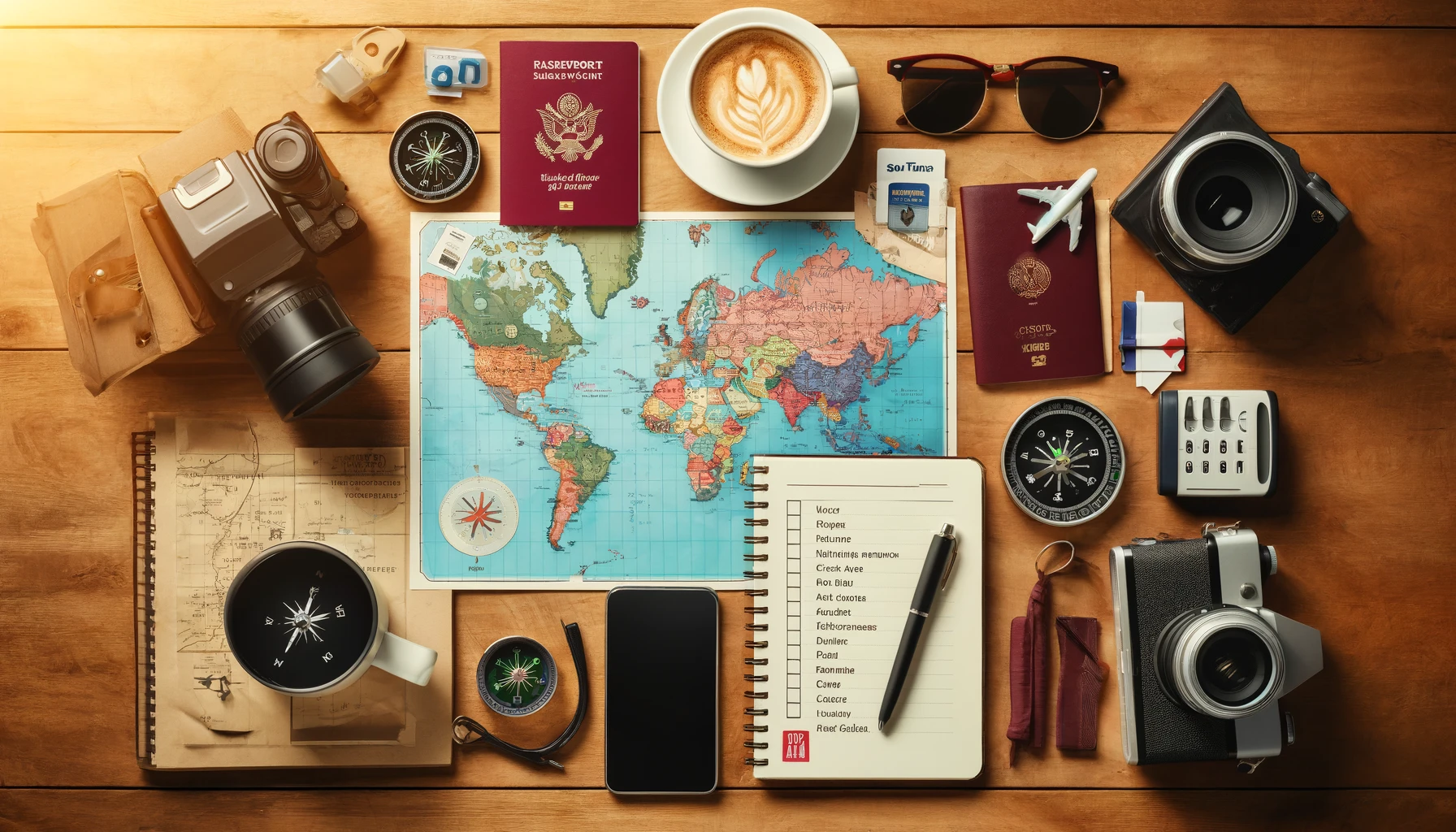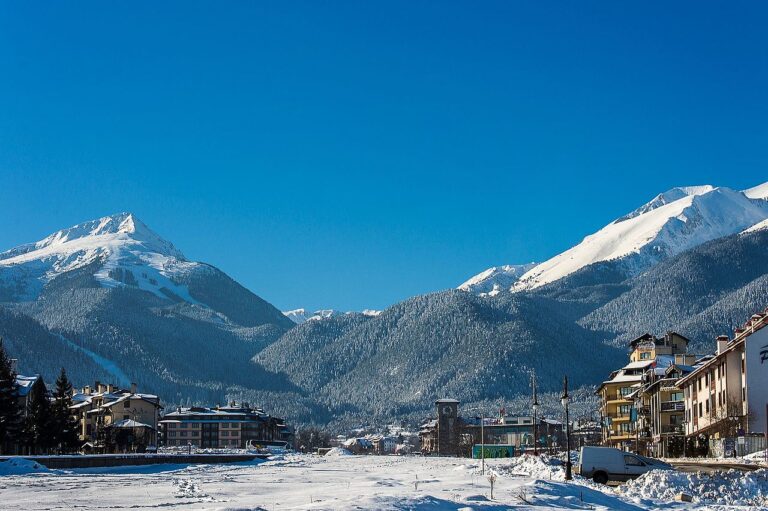Introduction
Welcome to your ultimate travel guide! This blog post is designed to help you plan, prepare, and enjoy your trips to the fullest. Whether you are a seasoned traveler or a first-time explorer, you’ll find valuable tips and tricks to make your travel experiences smoother, safer, and more enjoyable. Traveling opens up a world of opportunities, allowing you to explore new cultures, meet interesting people, and create unforgettable memories. Let’s embark on this journey together and discover how to make the most of your adventures!
Chapter 1: Planning Your Trip
Destination Research
Choosing the right destination is the first step in planning a memorable trip. Here are some tips to help you decide:
Interests and Preferences:
Historical Sites: For example, Rome offers the Colosseum and the Vatican, Athens boasts the Acropolis and Parthenon, and Cairo is home to the Pyramids of Giza.
Nature and Scenery: The Swiss Alps provide stunning mountain views and outdoor activities like hiking and skiing. Patagonia in South America offers dramatic landscapes perfect for trekking. U.S. national parks like Yellowstone and Yosemite are ideal for nature lovers.
Adventure Activities: In New Zealand, you can bungee jump in Queenstown, raft the Kaituna River, or trek the Milford Track. Costa Rica offers zip-lining in Monteverde, surfing in Tamarindo, and exploring Arenal Volcano.
Culinary Experiences: Tokyo is famous for sushi and ramen, Paris for its patisseries and fine dining, and Bangkok for street food like pad Thai and mango sticky rice.
Best Times to Visit:
Seasonal Travel: For example, the best time to visit the Maldives is from November to April for perfect beach weather. Europe is best explored in spring (April to June) and fall (September to October) to avoid the summer crowds.
Festival Travel: Plan to visit Munich during Oktoberfest in late September to early October, Rio de Janeiro for Carnival in February or March, and India during Diwali, which usually falls between October and November.
Off-Season Travel: Visiting places like Italy in winter (November to February) can offer lower prices and fewer tourists, but be prepared for cooler weather and shorter daylight hours.
Local Culture and Customs:·
Language Basics: Learn phrases like “hello” (e.g., “bonjour” in French, “hola” in Spanish), “please” (e.g., “s’il vous plaît” in French, “por favor” in Spanish), and “thank you” (e.g., “merci” in French, “gracias” in Spanish).
Dress Codes: In Middle Eastern countries, modest dress is required, especially for women. In religious sites like temples in Thailand or churches in Italy, covering shoulders and knees is expected.
Tipping Practices: In Japan, tipping can be seen as rude, while in the U.S., tipping 15-20% of the bill is customary. Research the local practices to avoid misunderstandings.
Cultural Etiquette: In India, eating with your right hand is customary, as the left hand is considered unclean. In Thailand, showing the soles of your feet is considered disrespectful.
Safety and Accessibility:
Travel Advisories: Check the U.S. State Department or the equivalent in your country for up-to-date travel advisories and safety information for your destination.
Accessibility: Research the availability of accessible transportation, hotels, and attractions if you have mobility issues. Websites like Accessible Travel and Wheelchair Travel provide valuable information.
Safe Destinations: Countries like Japan, Iceland, and New Zealand are often ranked high for traveler safety. Be aware of local laws and customs to avoid legal issues.
Budgeting for Travel
Creating a realistic budget is crucial for a stress-free trip. Here are some steps to guide you:
Estimate Costs:
Flights: Use tools like Skyscanner, Google Flights, and Hopper to compare prices and find the best deals. Consider budget airlines for cheaper options.
Accommodation: Compare prices on platforms like Booking.com, Airbnb, and Hostelworld. Look for discounts or special deals, especially for longer stays.
Food: Research average meal costs on apps like Yelp or TripAdvisor. For example, street food in Southeast Asia can be as cheap as $1-2 per meal, while dining out in Western Europe can cost $15-30 per meal.
Transportation: Calculate costs for local transportation, such as public transit passes, bike rentals, or car rentals. Consider purchasing a rail pass in Europe if you plan to travel between cities by train.
Activities: Look up prices for popular attractions and activities. For instance, a guided tour of the Colosseum in Rome might cost around $30-50, while entrance to national parks in the U.S. typically costs around $20-35 per vehicle.
Set a Budget:
Total Budget: Based on your research, set a realistic total budget. Break down the budget into categories like flights, accommodation, food, transportation, activities, and a contingency fund.
Example Budget: For a 10-day trip to Japan, your budget might include $800 for flights, $1,000 for accommodation, $300 for food, $200 for transportation, and $200 for activities, totaling $2,500 plus a $300 contingency fund.
Save Money:
Flight Deals: Sign up for fare alerts on websites like Scott’s Cheap Flights or The Flight Deal. Book flights during sales or use airline miles and credit card points to reduce costs.
Accommodation Savings: Consider staying in budget-friendly accommodations like hostels, guesthouses, or vacation rentals. Look for deals or discounts for longer stays.
Food Savings: Eat at local markets or street food vendors to save on dining expenses. Consider cooking some meals if your accommodation has a kitchen.
Transportation Savings: Use public transportation instead of taxis. Look into transportation passes that offer unlimited travel for a set period.
Track Expenses:
Budgeting Apps: Use apps like Trail Wallet, Mint, or Spendee to track your expenses in real-time. Input your estimated costs and compare them to your actual spending.
Daily Log: Keep a daily log of your expenses, noting down every purchase. This helps you stay within your budget and identify areas where you can cut back.
Regular Review: Review your spending regularly to make adjustments as needed. If you overspend in one category, find ways to save in another to stay within your total budget.
Travel Preparation
Preparing well for your trip ensures a smooth and enjoyable experience. Here are some essential steps and tips:
Packing Tips
· Creating a Packing List:
Make a detailed packing list to ensure you don’t forget anything important. Divide the list into categories such as clothing, toiletries, electronics, and travel documents.
Include essentials like your passport, travel insurance, and any necessary visas.
· Essential Items to Pack:
Clothing: Pack versatile clothing items that can be layered. Consider the climate of your destination and pack accordingly. Don’t forget essentials like underwear, socks, and comfortable walking shoes.
Toiletries: Pack travel-sized toiletries to save space. Include essentials like toothpaste, toothbrush, shampoo, conditioner, and a small first aid kit.
Electronics: Bring your phone, charger, power bank, and any other necessary electronics like a camera or tablet. Don’t forget plug adapters if traveling to a country with different outlets.
· Packing Light and Efficiently:
Use packing cubes to organize your items and save space.
Roll your clothes instead of folding them to maximize space and reduce wrinkles.
Limit yourself to one carry-on bag if possible to avoid checked baggage fees and waiting at baggage claim.
Travel Documents
· Necessary Travel Documents:
Ensure your passport is valid for at least six months beyond your intended return date.
Research visa requirements for your destination and apply for any necessary visas well in advance.

Carry a copy of your travel insurance policy and emergency contact information.
· Tips for Keeping Your Documents Safe:
Keep physical copies of important documents in a separate location from the originals.
Store digital copies of your passport, visa, travel insurance, and other important documents on your phone and in a secure cloud service.
Use a money belt or a hidden pouch to keep your passport and important documents safe while traveling.
Health and Safety
· Vaccinations and Health Precautions:
Check the CDC or your country’s equivalent for recommended vaccinations and health precautions for your destination.
Pack any necessary medications and a small first aid kit.
Consider bringing a water purification method if traveling to areas with questionable water quality.
· Travel Insurance:
Purchase travel insurance that covers health, accidents, and theft. Compare policies to find one that fits your needs.
Ensure your insurance covers activities you plan to do, such as hiking, skiing, or scuba diving.
· Safety Tips for Travelers:
Stay aware of your surroundings and keep an eye on your belongings, especially in crowded areas.
Avoid displaying valuables like expensive jewelry or large amounts of cash.
Research common scams in your destination and know how to avoid them.
Chapter 2: On the Road
Transportation Tips
Navigating different transportation options can be challenging, but these tips can help make your journey smoother:
Navigating Airports and Flights:
Check-In: Check-in online to save time at the airport. Arrive at least two hours before domestic flights and three hours before international flights.
Security: Prepare for security checks by having your ID and boarding pass ready. Wear easily removable shoes and limit liquids to 3.4 ounces (100 ml) in a clear, quart-sized bag.
Carry-On Essentials: Pack a small carry-on with essentials like a change of clothes, toiletries, medications, and important documents in case your checked luggage is delayed.
In-Flight Comfort: Bring a neck pillow, eye mask, and earplugs for long flights. Stay hydrated and stretch periodically to avoid discomfort.
Using Public Transportation:
Research: Research the public transportation options available at your destination, such as buses, trains, trams, and subways. Download local transit apps for schedules and routes.
Tickets and Passes: Purchase transit passes or tickets in advance if possible. Some cities offer tourist passes that provide unlimited travel for a set period.
Safety: Stay aware of your surroundings, especially in crowded areas. Keep your belongings secure and avoid traveling alone late at night.
Navigation: Use apps like Google Maps or Citymapper to navigate public transportation systems easily.
Renting a Car:
Booking: Book your rental car in advance to get the best rates. Compare prices on websites like Kayak, Expedia, or directly through rental companies.
Insurance: Check if your personal car insurance or credit card offers rental car coverage. If not, consider purchasing additional coverage from the rental company.
Driving Abroad: Research the driving laws and requirements of the country you’re visiting. Some countries require an International Driving Permit (IDP) in addition to your regular driver’s license.
Navigation: Use a GPS or a navigation app to help you get around. Familiarize yourself with the local road signs and driving customs.
Accommodation
Choosing the right accommodation can greatly enhance your travel experience. Here are some tips:
Choosing the Right Accommodation:
Hotels: Hotels offer comfort and convenience, often with amenities like room service, concierge, and fitness centers. Use websites like Booking.com or Hotels.com to find deals.
Hostels: Hostels are budget-friendly and great for meeting other travelers. Look for hostels with good reviews on Hostelworld or Hostelbookers.
Vacation Rentals: Platforms like Airbnb or Vrbo offer unique accommodation options, from apartments to entire homes. Read reviews and check the location before booking.
Bed and Breakfasts: B&Bs offer a more personal touch with breakfast included. They’re ideal for a cozy, local experience.
Tips for Booking Accommodation:
Reviews and Ratings: Read reviews on multiple platforms to get a well-rounded view of the accommodation. Pay attention to recent reviews for the most up-to-date information.
Location: Choose a location that is convenient for your planned activities. Consider proximity to public transportation, attractions, and dining options.
Amenities: Make a list of must-have amenities like free Wi-Fi, air conditioning, or a kitchen. Filter your search results to find accommodation that meets your needs.
Cancellation Policies: Check the cancellation policy before booking. Opt for flexible bookings when possible in case your plans change.
Handling Accommodation Issues:
Communication: Contact the accommodation immediately if you encounter any issues. Most places will be willing to help resolve problems.
Documentation: Keep copies of your booking confirmation and any communication with the accommodation provider.
Reviews: If the issue is not resolved, leave an honest review to inform future travelers and consider contacting the booking platform for assistance.
Exploring Your Destination
Once you’ve arrived at your destination, it’s time to explore and immerse yourself in the local culture. Here are some tips to make the most of your time:
Local Attractions
Researching and Choosing Attractions to Visit:
Guidebooks and Blogs: Use guidebooks like Lonely Planet or Rough Guides, and travel blogs to find recommendations for must-see attractions.
Local Tourism Websites: Visit the official tourism website of your destination for up-to-date information on attractions, events, and tours.
Apps and Maps: Use apps like TripAdvisor, Google Maps, or Visit a City to discover popular attractions and read reviews.
Tours: Consider joining guided tours for in-depth knowledge and convenience, especially for historical sites or natural wonders.
Tips for Avoiding Tourist Traps:
Off the Beaten Path: Explore lesser-known neighborhoods and attractions to avoid crowds and discover hidden gems.
Timing: Visit popular attractions early in the morning or late in the afternoon to avoid peak times.
Local Recommendations: Ask locals for their favorite spots and recommendations for authentic experiences.
Authenticity: Be cautious of overly commercialized attractions and look for experiences that offer genuine cultural insights.
Enjoying Popular Sites Without the Crowds:
Advance Tickets: Purchase tickets in advance to skip the lines at popular attractions.
Weekdays: Visit major attractions on weekdays rather than weekends to avoid larger crowds.
Off-Season Travel: Plan your visit during the shoulder or off-season for fewer tourists and better deals.
Private Tours: Consider booking private tours for a more personalized and crowd-free experience.

Culinary Adventures
Trying Local Cuisine:
Street Food: Sample street food to get a taste of local flavors at a low cost. Look for busy stalls with high turnover for fresh food.
Restaurants: Choose local, family-owned restaurants over international chains for an authentic dining experience.
Food Markets: Visit local food markets to try a variety of dishes and snacks. It’s also a great place to buy local ingredients and souvenirs.
Tips for Finding the Best Restaurants and Street Food:
Research: Use apps like Yelp, TripAdvisor, or Google Reviews to find highly-rated restaurants and street food vendors.
Local Advice: Ask locals, including your accommodation hosts or tour guides, for their favorite dining spots.
Popular Spots: Look for places with long lines or busy tables, as they are likely popular with both locals and tourists.
Food Tours: Join a food tour to sample multiple dishes and learn about the culinary culture from a knowledgeable guide.
Food Safety Tips:
Freshness: Choose food that is cooked fresh to order and avoid pre-cooked items that have been sitting out.
Water Safety: Drink bottled or purified water, especially in countries where tap water is not safe to drink.
Hygiene: Pay attention to the cleanliness of the food vendor or restaurant. Avoid places that appear unsanitary.
Food Allergies: Learn how to communicate your food allergies in the local language to avoid any issues.
Cultural Immersion
Respecting Local Customs and Traditions:
Dress Appropriately: Research the local dress code and dress modestly when required, especially when visiting religious or cultural sites.
Greetings: Learn and use the local greeting customs, such as bowing in Japan or cheek kissing in many European countries.
Behavior: Be mindful of local etiquette, such as removing your shoes before entering someone’s home or a temple.
Tips for Meaningful Interactions with Locals:
Learn the Language: Learn a few basic phrases in the local language to show respect and make interactions smoother.
Open Mind: Approach interactions with an open mind and a willingness to learn. Be respectful and curious about different customs and ways of life.
Participate in Local Activities: Join local events, festivals, or workshops to meet locals and experience the culture firsthand.
Learning Basic Phrases in the Local Language:
Essential Phrases: Learn essential phrases like “hello,” “thank you,” “please,” “excuse me,” and “goodbye.”
Language Apps: Use language learning apps like Duolingo, Babbel, or Memrise to practice basic phrases before and during your trip.
Phrasebook: Carry a small phrasebook or download a translation app to help with communication.
Chapter 3: Travel Tips and Tricks
This chapter focuses on practical advice and strategies to enhance your travel experience, save time and money, and ensure a smooth journey.
Travel Hacks
Tips for Saving Time and Money:
Flight Deals: Sign up for fare alerts on sites like Skyscanner, Google Flights, and Scott’s Cheap Flights to find the best deals on airfare.
Flexible Dates: Be flexible with your travel dates and times to take advantage of lower fares and less crowded flights.
Accommodation Discounts: Use websites like Airbnb, Booking.com, and Hostelworld to find discounted rates. Consider staying in less touristy neighborhoods for better deals.
Public Transport: Use local public transportation instead of taxis to save money. Look for city passes that offer unlimited travel for a fixed period.
Travel Rewards: Sign up for travel rewards programs and credit cards that offer points or miles for travel-related purchases.
Useful Travel Apps and Websites:
Navigation: Use Google Maps or Citymapper for navigating cities and finding public transportation routes.
Language Translation: Download Google Translate or iTranslate to help with language barriers.
Currency Conversion: Use apps like XE Currency or OANDA to keep track of exchange rates and manage your budget.
Accommodation: Apps like Airbnb, Booking.com, and Hostelworld can help you find and book accommodation on the go.
Flight Tracking: Use FlightAware or Flightradar24 to track your flights and receive real-time updates.
Staying Connected While Traveling:
SIM Cards and Wi-Fi: Purchase a local SIM card or use an international roaming plan to stay connected. Portable Wi-Fi devices are also an option for reliable internet access.
Communication Apps: Use apps like WhatsApp, Skype, or Viber to stay in touch with family and friends.
Data Management: Use offline maps and download travel guides to save on data usage. Many apps offer offline functionality to help you navigate without an internet connection.
Photography Tips
Capturing Your Travel Experiences:
Plan Your Shots: Research your destination and make a list of the iconic spots and hidden gems you want to photograph.
Golden Hour: Take advantage of the golden hour (the first hour after sunrise and the last hour before sunset) for the best lighting.
Unique Angles: Experiment with different angles and perspectives to capture unique and interesting shots.
Tips for Taking Better Travel Photos:
Rule of Thirds: Use the rule of thirds to compose your shots. Imagine your frame divided into nine equal parts and place your subject along these lines or intersections.
Lighting: Avoid harsh midday sun. Overcast days can provide soft, diffused light that’s great for photography.
Focus on Details: Capture the small details that tell the story of your trip, such as local food, street art, or architectural features.
Storing and Sharing Your Photos:
Backup: Regularly back up your photos to a cloud service like Google Photos, Dropbox, or iCloud.
Organize: Organize your photos by date and location to easily find and share them later.
Editing: Use photo editing apps like Adobe Lightroom, Snapseed, or VSCO to enhance your photos before sharing them.
Social Media: Share your travel experiences on social media platforms like Instagram, Facebook, or a travel blog to inspire others.
Sustainable Travel
Eco-Friendly Travel Tips:
Reduce Plastic Use: Carry a reusable water bottle, shopping bag, and utensils to minimize single-use plastic waste.
Energy Conservation: Turn off lights, air conditioning, and electronics when not in use. Choose accommodations that prioritize sustainability.
Local Products: Support local artisans and businesses by purchasing locally-made products instead of mass-produced souvenirs.
Minimizing Your Carbon Footprint:
Transportation: Opt for trains, buses, or carpooling instead of flying for shorter distances. Use public transportation, walk, or bike when exploring cities.
Carbon Offsetting: Consider offsetting your carbon emissions by investing in environmental projects through organizations like Gold Standard or Cool Effect.
Sustainable Accommodation: Stay in eco-friendly accommodations that use renewable energy, reduce waste, and support local communities.
Supporting Local Economies and Responsible Tourism:
Local Guides: Hire local guides and participate in community-based tourism activities to support the local economy and gain a deeper understanding of the culture.
Respect Wildlife: Avoid attractions that exploit animals, such as elephant rides or dolphin shows. Support ethical wildlife experiences and conservation efforts.
Cultural Sensitivity: Respect local customs, traditions, and dress codes. Seek permission before taking photos of people or sacred sites.
Chapter 4: Post-Trip
Reflecting on your travels and organizing your memories are important steps to ensure you make the most out of your travel experiences. Here’s how to effectively wrap up your trip:
Returning Home
Tips for Dealing with Post-Travel Blues:
Stay Connected: Keep in touch with the people you met during your travels. Sharing experiences and maintaining connections can help ease the transition back home.
Plan Future Trips: Start planning your next adventure. Having something to look forward to can alleviate post-travel depression.
Incorporate Travel into Your Daily Life: Bring elements of your travel experiences into your everyday life, such as cooking dishes from the places you visited or learning the language.
Stay Active: Engage in activities that keep you physically and mentally active. Exercise, hobbies, and socializing can help you adjust back to your routine.
Organizing and Sharing Your Travel Memories:
Photo Albums and Scrapbooks: Create photo albums or scrapbooks to document your journey. Include photos, ticket stubs, maps, and other memorabilia.
Travel Journals: Write about your experiences in a travel journal. Reflecting on your trip can help preserve memories and provide insights for future travels.
Digital Slideshows: Create digital slideshows or videos to share with friends and family. Use software like iMovie, Adobe Premiere, or simple apps like Google Photos to compile your visuals.
Social Media and Blogs: Share your travel stories and photos on social media platforms or start a travel blog. This can inspire others and keep your travel experiences alive.
Reflecting on Your Journey
How Travel Changes You:
Perspective: Travel broadens your perspective and helps you see the world from different viewpoints. It teaches empathy and cultural sensitivity.
Confidence: Navigating new places and overcoming challenges during your travels can boost your confidence and problem-solving skills.
Adaptability: Travel often requires you to adapt to new situations, which can make you more flexible and open-minded in everyday life.
Encouraging Others to Travel and Explore:
Share Your Stories: Talk about your travel experiences with friends, family, and colleagues. Your stories can inspire others to embark on their own adventures.
Offer Tips and Advice: Provide practical advice and recommendations to aspiring travelers. Sharing your insights can help them plan and enjoy their trips.
Join Travel Communities: Participate in travel forums, social media groups, or local meetups to connect with other travelers and share experiences.
Conclusion
Final Thoughts
Traveling is an enriching and transformative experience that opens up a world of opportunities. Whether you’re exploring a new city, immersing yourself in a different culture, or embarking on an adventure, each journey brings unique insights and unforgettable memories. The key to a successful trip lies in thorough planning, staying open to new experiences, and prioritizing your safety.
Remember, the world is vast and full of wonders waiting to be discovered. Step out of your comfort zone, embrace the unknown, and embark on your next adventure with curiosity and respect. Happy travels!
Additional Resources
Recommended Travel Blogs and Websites:
Visit Europe Now: visiteuropenow.com
Nomadic Matt: nomadicmatt.com
The Points Guy: thepointsguy.com
Lonely Planet: lonelyplanet.com
TripAdvisor: tripadvisor.com
Useful Travel Apps and Websites:
Google Maps: Navigation and maps
TripAdvisor: Reviews and recommendations
Airbnb: Accommodation
Booking.com: Accommodation
Skyscanner: Flight deals
XE Currency: Currency conversion
Google Translate: Language translation
Citymapper: Public transportation



